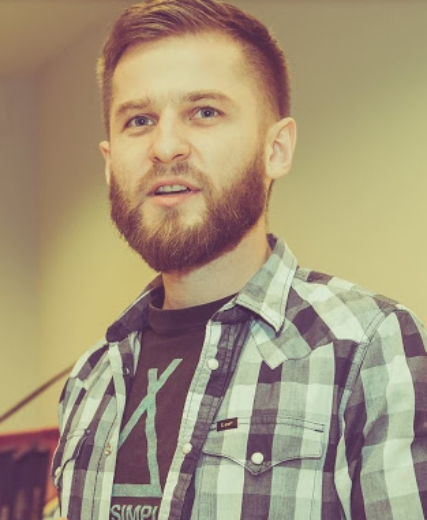Lost in Translation: Trauma Healing Body Language
Five years ago, I was visiting Puerto de la Cruz, a city in Tenerife, a Spanish island. With a few Polish-speaking people, we had lunch at a bar, and a waiter named Jose came and asked in Spanish where we were from. We said “de Polonia,” and I felt encouraged to teach him a few Polish expressions. He resisted with an instant reaction of “I don’t speak that language.” I tried again with a different word. It didn’t work. “I don’t speak that language.” I tried again. The same automatic response. “I don’t speak that language.” After a few attempts, I felt discouraged, and I gave up. I didn’t understand why he didn’t even want to try.
Have you ever had clarity of what is the right thing to do and you didn’t do it? Have you ever received a piece of advice from someone you respected and didn’t apply it? Have you ever said: “I will never do it again,” and the next week you did it again? We all have! And before we jump to conclusions based on moral judgments or how weak of a character we have, let’s consider the possibility that maybe we try to force certain changes, but we use the wrong language. We expect the change to happen, but the automatic response is: “I don’t speak that language.”

Somatic Key to Locked Trauma Door
And there is a chance that in many therapy rooms, the same thing can be happening, sometimes for years, in spite of hours of talking. Isn't it an invitation to expand our vocabularies and become inclusive of other possible "languages" that will enable us, therapists, practitioners, facilitators, to be more effective in healing communication?
Our brains continue to take in new information and construct new realities as long as our bodies feel safe. When we become fixated on the trauma, our ability to take in new information is lost, and we continue to construct and re-construct the old realities. In this case, intellect and rationality really need to be paired with somatic aspects (awareness and interventions) to open the doors for taking in new, updated information again. When the doors are locked, we simply cannot enter.
Under conditions of extreme stress, there is the failure of memory processing, leaving the sensory elements of the experience unintegrated and unattached. These sensory elements are then prone to return when activated by current reminders. As Ecker says, emotional memory converts the past into an expectation of the future and makes the worst experiences in our past persist as felt realities.
The brain is biased to respond to any danger signal it has known before so it confuses the truth of “I was in danger then” with the compelling perception of “I AM in danger - right now!” It doesn’t do it only with obvious triggers like aggressive attacks or painful confrontations but also “positive” things that have been associated with danger, like being joyful or changing for the better. And this aspect can really complicate lives.

Found in Translation: Unlocking Trauma Healing Paths
Janina Fisher shared a story of her client, who was a victim of sexual abuse. Because the abuse happened in a white van, the client had an extreme stress reaction every time she saw a white van in the street for the next 8 years after the initial event. From the neuro perspective, we can say that the amygdala was faster than the prefrontal cortex. Saying that a white van is just a white van was rejected by emotional memory with automatic, “I don't speak that language.”
The first goal of trauma treatment is to help patients recognize the role of triggering in causing and perpetuating their symptoms in order to empower them (to decrease fear and shame when responses are triggered and increase their capacity for self-regulation).
While telling the story provides crucial information about the client’s past and current life experience, treatment must address the here-and-now experience of the traumatic past happening in the body. This way, we directly address the somatic legacy of trauma. We can use the narrative to evoke the trauma-related bodily experience to first attend to discover how the body has remembered the trauma and then to provide the somatic experiences needed for resolution.
Observing without interpretation and repeatedly calling attention to somatic phenomena disrupts the automaticity with which learned reaction is ordinarily expressed. Then, we can engage in activities that empathically but directly disrupt what has been procedurally learned and create the opportunity for new experiences. They are possible when we, indeed... speak the same language.
Thank You for taking the time to read this article.
If you're interested in further exploring the topic of including the body in therapeutic practice, join the recording of our free webinar with Janina Fisher.

![Webinar MBT [SP] 3](https://lifearchitect.com/app/files/2024/03/webinar_janina_fisher_cover.jpg)
